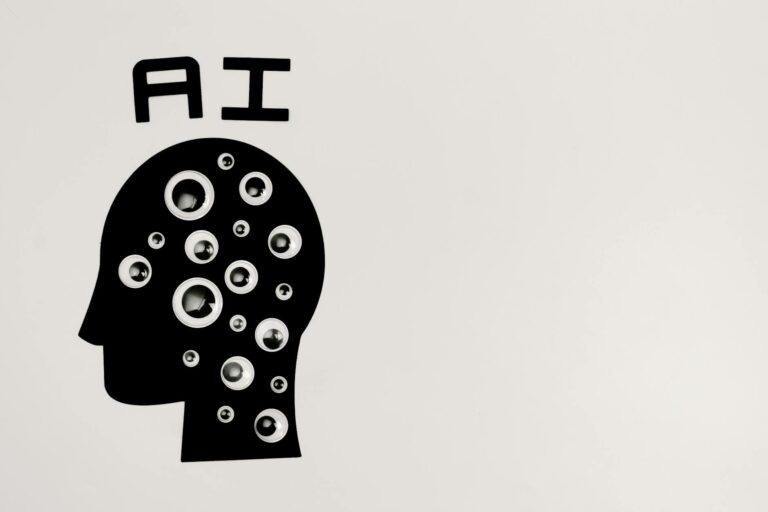Harness 2025 Tech Trends for Smarter Business Growth
Navigating the Future: Key 2025 Tech Trends and How to Harness Them for Business Growth
Estimated reading time: 11-12 minutes
Key Takeaways
- Prioritize Performance & User Experience: Invest in modern web and mobile frameworks like Next.js and Flutter/React Native, coupled with cutting-edge UI/UX, to ensure fast, intuitive, and engaging digital experiences for your customers.
- Strategically Integrate AI Automation: Leverage AI-powered tools, chatbots, and no-code platforms to automate repetitive tasks, enhance customer service, and free up human resources for strategic initiatives.
- Modernize Your Digital Infrastructure: Embrace cloud computing, serverless architectures, and robust CI/CD pipelines to build scalable, reliable, cost-efficient, and agile backend operations.
- Embrace Incremental Digital Transformation: Focus on data-driven decisions and make small, impactful changes to optimize processes and customer touchpoints, building momentum towards comprehensive digital transformation.
- Design for Inclusivity and Responsiveness: Ensure all digital products offer seamless, accessible, and optimized experiences across every device and for all users, enhancing brand reputation and market reach.
Table of Contents
- The Digital Core: Web Development Redefined for 2025
- Mobile Innovation: Apps That Engage and Perform in 2025
- Powering the Future: Cloud Computing & DevOps Evolution
- The AI Revolution: AI Automation for Businesses and Intelligent Systems
- Designing for Tomorrow: Modern UI/UX and Digital Experience
- Practical Takeaways for Your Business in the Age of 2025 Tech Trends
- Why AITechScope is Your Partner in Digital Transformation
- Ready to Transform Your Business with Cutting-Edge AI and Automation?
- FAQ
The pace of technological evolution is not just accelerating; it’s reshaping the fundamental landscape of how businesses operate, innovate, and connect with their customers. As we cast our gaze towards the horizon of 2025 tech trends, it becomes clear that adaptability and strategic integration of emerging technologies are no longer optional but essential for survival and growth. From the intricate code of web development to the intuitive interfaces of mobile apps, the robust infrastructure of cloud computing, the intelligent automation powered by AI, and the human-centric design of UI/UX, every facet of the digital world is undergoing a profound transformation.
This comprehensive guide is crafted for business professionals, entrepreneurs, and tech-forward leaders eager to understand and leverage these seismic shifts. We’ll break down complex trends into actionable insights, illustrating how today’s cutting-edge technologies can dramatically accelerate growth, improve operational performance, and fundamentally redefine the way companies function. At AITechScope, we believe that understanding these trends is the first step; the next is strategically implementing them. We specialize in empowering businesses to harness these technologies through intelligent delegation and advanced AI automation solutions, turning challenges into opportunities for unparalleled efficiency and innovation.
The Digital Core: Web Development Redefined for 2025
Web development in 2025 is less about building static pages and more about crafting dynamic, intelligent, and hyper-responsive digital experiences. The demand for speed, security, and scalability continues to drive innovation, pushing developers towards more sophisticated frameworks and architectures. The shift in web development trends directly impacts user engagement and ultimately, business success.
One of the most prominent advancements is the ascendancy of frameworks like Next.js. For businesses, especially small and medium-sized enterprises (SMEs), Next.js offers a powerful combination of server-side rendering (SSR) and static site generation (SSG), leading to incredibly fast load times and superior search engine optimization (SEO). Imagine a marketing site that loads almost instantaneously, providing an optimal user experience from the first click – this is the promise of Next.js. As one article highlights, “Next.js for Small Businesses: Build a Fast Marketing Site in One Weekend,” demonstrating its efficiency for rapid deployment without sacrificing performance. This speed isn’t just a luxury; it directly translates to lower bounce rates, higher conversion rates, and a stronger competitive edge in an attention-scarce digital environment. Furthermore, developers are increasingly focused on “5 Simple React Performance Fixes That Reduce Page Load by Seconds,” ensuring that even complex applications remain lightning-fast and deliver seamless user experiences, directly correlating with improved user satisfaction and business metrics.
Alongside Next.js, the concept of a headless CMS (Content Management System) is gaining significant traction. Traditional CMS platforms often couple the frontend (how content is presented) with the backend (where content is stored and managed), limiting flexibility. A headless CMS, such as a “WordPress Without the Bloat,” separates these concerns. This allows businesses to use WordPress for its robust content management capabilities while powering their frontend with modern frameworks like Next.js, React, or Vue. The benefits are multifold: enhanced security, improved performance, greater flexibility in deploying content across various platforms (web, mobile apps, IoT devices), and a future-proof architecture that can adapt to new digital channels. For businesses, this means more agile content strategies and the ability to deliver consistent brand experiences everywhere their customers are present.
Another architectural shift making waves is the adoption of micro frontends. Much like microservices for backend development, micro frontends break down complex web applications into smaller, independent, and manageable pieces. While “Micro Frontends: When They Help and When They Hurt” advises careful consideration, for large enterprise applications or products with multiple feature teams, they can significantly improve development velocity, team autonomy, and the maintainability of large codebases. This modularity allows different teams to work on distinct parts of an application simultaneously, reducing bottlenecks and accelerating feature delivery. For example, an e-commerce platform could have separate micro frontends for product listings, shopping cart, and user profile, each developed and deployed independently, leading to faster updates and greater team efficiency.
Finally, AI-powered web apps are moving from novelty to necessity. Imagine websites that personalize content in real-time based on user behavior, chatbots that offer instant, intelligent support, or internal tools that automate complex data analysis directly within the browser. These applications leverage AI to create more intelligent, responsive, and efficient user experiences, leading to higher engagement and more informed decision-making.
Practical Takeaways for Web Development:
- Prioritize Performance: Invest in modern frameworks like Next.js for your marketing and application frontends to enhance user experience and SEO.
- Embrace Headless Architecture: Decouple your content from your presentation layer with a headless CMS for greater flexibility, scalability, and cross-platform content delivery.
- Consider Micro Frontends: For large-scale or multi-team applications, evaluate if a micro frontend strategy can enhance development agility and maintainability.
- Integrate AI Thoughtfully: Look for opportunities to embed AI for personalization, intelligent search, or enhanced customer support directly into your web presence.
AITechScope excels in building high-performance web solutions using Next.js and headless CMS architectures, ensuring your digital storefront is fast, scalable, and built for future growth. Our expertise in performance optimization techniques ensures your website stands out in a crowded digital landscape, driving better business outcomes.
Mobile Innovation: Apps That Engage and Perform in 2025
The mobile landscape continues its explosive growth, with users increasingly relying on their smartphones for everything from communication and commerce to entertainment and productivity. For businesses, a robust mobile strategy is paramount, and mobile app development 2025 is all about delivering seamless, high-performance, and cross-platform experiences.
A central debate in mobile development revolves around choosing between native development and cross-platform frameworks. In 2025, the discussion often boils down to Flutter vs. React Native. Both have matured significantly, offering compelling advantages for businesses looking to build apps that run on both iOS and Android from a single codebase. As explored in “React Native vs Flutter in 2025: Which Is Best for Your Business App?“, Flutter, backed by Google, offers exceptional UI rendering capabilities and performance akin to native apps, often praised for its “Build a Simple Cross-Platform App with Flutter: From Idea to Play Store” efficiency. React Native, leveraging JavaScript and React’s ecosystem, benefits from a vast developer community and strong integration with existing web technologies. The choice often depends on existing team skills, specific performance requirements, and the desired level of custom UI/UX. For many startups and businesses, cross-platform development offers a significant advantage in terms of faster time-to-market and reduced development costs, allowing them to reach a broader audience simultaneously without doubling their development efforts.
Beyond the framework choice, mobile app UI trends are evolving towards more intuitive, personalized, and accessible designs. Users expect apps to be visually appealing, easy to navigate, and responsive to their needs. This includes incorporating subtle animations, clear visual hierarchies, and haptic feedback to enhance the user experience. Accessibility, too, is not just a regulatory requirement but a fundamental aspect of good design, ensuring that apps are usable by everyone, regardless of ability. An accessible app widens your market reach and enhances your brand’s reputation for inclusivity.
Practical Takeaways for Mobile Development:
- Embrace Cross-Platform: Leverage frameworks like Flutter or React Native to build efficient, high-quality apps for both iOS and Android from a single codebase.
- Focus on UI/UX: Invest in modern mobile UI design that prioritizes intuitive navigation, visual appeal, and user accessibility to drive engagement and retention.
- Personalize Experiences: Explore ways to use data and AI to personalize app content and features, making each user’s experience unique and relevant.
AITechScope offers expert mobile app development services, guiding you through the strategic choices between Flutter and React Native and ensuring your application delivers an outstanding user experience that aligns with the latest mobile UI trends. Our focus is on building high-performance, user-centric apps that drive business growth.
Powering the Future: Cloud Computing & DevOps Evolution
The backbone of modern digital operations lies in robust, scalable, and efficient infrastructure. Cloud computing and DevOps continue to be central pillars, enabling businesses to innovate faster, scale smarter, and operate more reliably. These practices are crucial for achieving the agility required in today’s fast-evolving market.
Serverless architecture is revolutionizing how companies think about infrastructure. Instead of provisioning and managing servers, businesses can focus solely on writing code, with the cloud provider automatically handling server management, scaling, and maintenance. As detailed in “Serverless on AWS: Create a Cost-Efficient Backend That Scales Automatically,” serverless platforms like AWS Lambda allow for highly cost-efficient backends, paying only for the compute time consumed. This dramatically reduces operational overhead, eliminates the need for server maintenance teams, and provides unparalleled scalability, automatically adjusting to demand spikes without manual intervention. For startups and small businesses, this means enterprise-grade scalability without enterprise-level infrastructure costs, making advanced capabilities accessible and fostering innovation without hefty upfront investments.
For businesses still operating with legacy applications, the journey to the cloud can seem daunting. However, cloud migration strategy is no longer an insurmountable hurdle. “How to Move Your Legacy App to the Cloud Without Breaking It” emphasizes a phased approach, often starting with a lift-and-shift of existing applications to cloud virtual machines, followed by gradual refactoring or containerization. This approach minimizes disruption while allowing businesses to immediately benefit from cloud scalability, reliability, and cost efficiencies. A well-executed cloud migration is a critical step in any digital transformation strategy, unlocking new levels of agility, reducing technical debt, and building operational resilience against future challenges.
Hand-in-hand with cloud adoption is the evolution of DevOps practices. DevOps best practices integrate development and operations teams, fostering collaboration and automating the software delivery pipeline. For small teams, implementing CI/CD automation (Continuous Integration/Continuous Deployment) is no longer a luxury but a necessity. The article illustrates how tools like GitHub Actions can streamline the entire process from code commit to deployment, reducing manual errors, accelerating release cycles, and freeing up developers to focus on innovation. This continuous feedback loop and automated deployment pipeline are crucial for maintaining agility and delivering updates rapidly, keeping pace with market demands and ensuring software quality.
Practical Takeaways for Cloud & DevOps:
- Explore Serverless: Investigate serverless options for new features or cost-efficient backend services to drastically reduce operational overhead and scale effortlessly.
- Plan Your Cloud Migration: If you have legacy systems, develop a strategic, phased approach to migrate them to the cloud for improved scalability, reliability, and cost reduction.
- Implement CI/CD: Automate your development and deployment workflows, even for small teams, to accelerate releases, improve code quality, and foster collaboration.
AITechScope provides comprehensive cloud migration strategies, serverless backend development, and implements robust CI/CD automation. Our expertise ensures your infrastructure is optimized for performance, scalability, and cost efficiency, forming a solid foundation for your digital future and supporting your overall digital transformation goals.
The AI Revolution: AI Automation for Businesses and Intelligent Systems
Perhaps no other trend is transforming the business landscape as profoundly as Artificial Intelligence. AI automation for businesses is moving beyond theoretical discussions to practical, impactful applications that are reshaping workflows, enhancing customer experiences, and uncovering new revenue streams. The intelligent delegation of tasks is quickly becoming a competitive advantage.
The growth of AI in everyday business operations is staggering. From intelligent virtual assistants to predictive analytics, AI is becoming an indispensable tool. A prime example of this trend is seen in the creative industry, where companies like ElevenLabs are democratizing content creation. “ElevenLabs now lets authors create and publish audiobooks on its own platform,” showcasing how sophisticated voice AI can generate high-quality audio narration, making audiobook production more accessible and efficient for authors. This highlights the broader trend of AI lowering barriers to entry in various domains, allowing businesses to create richer, more diverse content without significant human capital investments.
For businesses looking to enhance internal efficiency and customer interaction, chatbot automation is a game-changer. The article demonstrates how chatbots can handle routine inquiries, qualify leads, schedule appointments, and provide instant support, freeing up human agents for more complex tasks. This not only improves customer satisfaction through 24/7 availability but also significantly reduces operational costs. Beyond customer service, AI is being embedded into internal workflow automation tools, streamlining repetitive tasks across departments. The article “Automate Repetitive Tasks with No-Code Tools + AI (Save 5–10 Hours/Week)” reveals the tangible benefits of integrating AI with platforms like n8n or Zapier, allowing businesses to automate data entry, report generation, email management, and more. This intelligent delegation frees up valuable human resources, allowing teams to focus on strategic initiatives rather than mundane, repetitive chores.
Furthermore, SaaS product optimization is increasingly leveraging AI to create smarter, more delightful user experiences. Imagine SaaS platforms that offer such as personalized recommendations, intelligent search within the app, or automated summary generation for complex documents. These features not only enhance user engagement but also drive product adoption and retention by making the software more powerful and intuitive. For businesses, this means delivering more value to their customers with minimal development overhead, leveraging pre-built AI services to stay competitive.
Practical Takeaways for AI Automation:
- Identify Automation Opportunities: Pinpoint repetitive, rule-based tasks in your business processes that can be automated with AI-powered tools and no-code platforms.
- Implement Smart Chatbots: Deploy AI-powered chatbots for customer service, lead qualification, or internal support to enhance efficiency and provide 24/7 availability.
- Enhance SaaS Products with AI: Explore low-effort AI features to make your products smarter, more engaging, and more valuable for users.
- Leverage AI for Content Creation: Investigate AI tools for generating content (text, audio, video) to scale your marketing and internal communication efforts more efficiently.
AITechScope is at the forefront of the AI revolution, providing specialized AI automation for businesses, including n8n workflow development and sophisticated chatbot automation. Our AI consulting services help you identify the most impactful AI applications, integrate intelligent virtual assistants, and transform your operational efficiency by putting AI to work for you.
Designing for Tomorrow: Modern UI/UX and Digital Experience
User experience (UX) and user interface (UI) design are no longer mere afterthoughts; they are critical differentiators in a competitive digital landscape. Modern UI/UX design focuses on creating intuitive, engaging, and accessible experiences that foster user loyalty and drive business outcomes. The quality of your digital interactions directly impacts your brand perception and bottom line.
A key aspect of modern design is ensuring responsive UI design across all devices. With users accessing content on a myriad of screens – from smartwatches to large desktop monitors – applications must seamlessly adapt their layout and functionality. This responsive approach isn’t just about aesthetics; it’s about providing a consistent and optimal experience, regardless of how a user chooses to interact with your digital presence. A fragmented experience can lead to frustration and lost customers.
Beyond responsiveness, accessible design is paramount. The article underscores that accessibility isn’t just for compliance; it genuinely improves usability for everyone. Clear visual cues, sufficient color contrast, keyboard navigation support, and thoughtful labeling are examples of accessible design principles that benefit users with disabilities and enhance the experience for all users, including those with temporary limitations or in challenging environments. An accessible design widens your potential audience, strengthens your brand’s commitment to inclusivity, and mitigates legal risks.
For businesses embarking on a comprehensive digital transformation strategy, UI/UX design is at the heart of the process. It’s not just about updating visuals; it’s about reimagining how users interact with your services and internal systems. As highlighted in “Digital Transformation on a Budget: 7 Steps Small Companies Can Start Today,” even small companies can initiate transformation by focusing on user-centric design principles, optimizing existing digital touchpoints, and incrementally improving the overall digital experience. The goal is to create delightful and efficient interactions, whether it’s an external customer portal or an internal employee dashboard, ensuring high adoption rates and user satisfaction.
Practical Takeaways for UI/UX Design:
- Prioritize Responsive Design: Ensure your digital products offer a seamless and optimized experience across all devices and screen sizes.
- Embrace Accessibility: Design with inclusivity in mind from the outset. This benefits all users, broadens your audience, and enhances your brand reputation.
- User-Centric Transformation: Place UI/UX at the core of your digital transformation initiatives to drive user adoption, satisfaction, and achieve your business objectives.
AITechScope understands that exceptional design is integral to successful technology adoption. Our team provides expert UI/UX consulting, ensuring your digital products are not only visually appealing but also intuitive, accessible, and strategically aligned with your business objectives, leading to a truly effective digital transformation.
Practical Takeaways for Your Business in the Age of 2025 Tech Trends
The insights gleaned from these 2025 tech trends reveal a common thread: agility, efficiency, and intelligence are the currencies of success. For business professionals, entrepreneurs, and tech-forward leaders, here’s how to translate these trends into actionable strategies:
- 1. Invest in Performance and User Experience: Whether it’s your website, mobile app, or internal tools, speed and intuitive design are non-negotiable. Leverage modern frameworks like Next.js, embrace headless architectures, and prioritize cutting-edge UI/UX principles. This directly impacts customer satisfaction and conversion rates.
- 2. Strategically Adopt AI Automation: Identify high-volume, repetitive tasks that can be automated using AI-powered tools and chatbots. This isn’t about replacing humans but augmenting their capabilities, freeing them for higher-value, creative, and strategic work.
- 3. Modernize Your Infrastructure: Embrace cloud computing and serverless architectures for unparalleled scalability, reliability, and cost efficiency. Implement CI/CD to accelerate your development cycles and maintain a competitive edge through rapid innovation.
- 4. Embrace Digital Transformation Incrementally: You don’t need to overhaul everything at once. Start with small, impactful changes that leverage these technologies to improve specific processes or customer touchpoints. Focus on quick wins and build momentum.
- 5. Focus on Data-Driven Decisions: Utilize AI and advanced analytics to understand your customers better, personalize experiences, optimize your operations, and make more informed strategic decisions.
Why AITechScope is Your Partner in Digital Transformation
Navigating these complex software development 2025 and technology landscapes can be challenging, but you don’t have to do it alone. This is where AITechScope steps in as your strategic partner. We are more than just a service provider; we are your dedicated virtual assistant in digital transformation, specializing in helping businesses like yours leverage cutting-edge AI tools and technologies.
Our expertise spans the critical areas discussed:
- AI Automation & n8n Workflow Development: We design and implement intelligent automation solutions, streamlining your business processes, reducing costs, and enhancing operational efficiency through powerful platforms like n8n.
- AI Consulting & Strategy: We help you identify the most impactful AI applications for your business, from advanced chatbot automation for superior customer service to seamlessly integrating AI into your existing SaaS products.
- High-Performance Website Development: Utilizing Next.js and headless CMS architectures, we build fast, scalable, and SEO-optimized websites that serve as powerful digital assets and conversion engines.
- Mobile App Innovation: We guide you through strategic framework selection (Flutter vs. React Native) and develop engaging, performant cross-platform mobile applications that reach wider audiences.
- Cloud & DevOps Implementation: We strategize comprehensive cloud migrations, implement cost-efficient serverless backends, and set up robust CI/CD pipelines to ensure your infrastructure is modern, agile, and secure.
- Modern UI/UX Design: We ensure your digital products are not only functional but also intuitive, accessible, and delightful for your users, driving adoption, satisfaction, and ultimately, business growth.
By partnering with AITechScope, you’re not just getting technology solutions; you’re gaining a strategic advantage through intelligent delegation and advanced automation. We help you scale operations, reduce costs, and improve efficiency, ensuring you stay ahead in the rapidly evolving digital world.
Ready to Transform Your Business with Cutting-Edge AI and Automation?
The future is now, and the 2025 tech trends are already shaping how businesses succeed. Don’t let your business be left behind. Explore how AITechScope’s AI automation and consulting services can unlock new potentials for efficiency, growth, and innovation.
Contact AITechScope today for a personalized consultation and discover how intelligent delegation can revolutionize your operations.
Let us help you build the future of your business, smarter and more efficiently.
FAQ
What are the main 2025 tech trends for business growth?
The primary trends include advanced web development (Next.js, headless CMS), mobile app innovation (Flutter/React Native), robust cloud computing & DevOps (serverless, CI/CD), widespread AI automation (chatbots, workflow tools), and modern UI/UX design focusing on responsiveness and accessibility.
How can AI automation benefit my business?
AI automation can streamline repetitive tasks, improve customer service through intelligent chatbots, enhance internal workflows, and personalize user experiences in SaaS products. This leads to reduced operational costs, increased efficiency, and freeing up human resources for strategic work.
Why is a headless CMS important for web development in 2025?
A headless CMS decouples content from its presentation layer, offering enhanced security, improved performance, greater flexibility for content deployment across various platforms (web, mobile, IoT), and a future-proof architecture that adapts to new digital channels. It allows businesses to manage content efficiently while using modern frontend frameworks.
What is the advantage of cross-platform mobile app development?
Cross-platform frameworks like Flutter and React Native allow businesses to build high-quality applications for both iOS and Android from a single codebase. This significantly reduces development costs and time-to-market, enabling businesses to reach a broader audience simultaneously without doubling their development efforts.
How does serverless architecture impact business operations?
Serverless architecture allows businesses to focus solely on code, with the cloud provider managing server provisioning, scaling, and maintenance. This dramatically reduces operational overhead, eliminates the need for server management teams, provides unparalleled scalability, and ensures cost-efficiency by paying only for consumed compute time.







